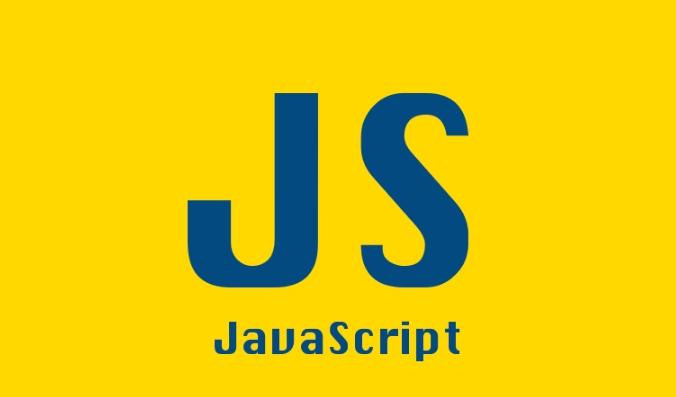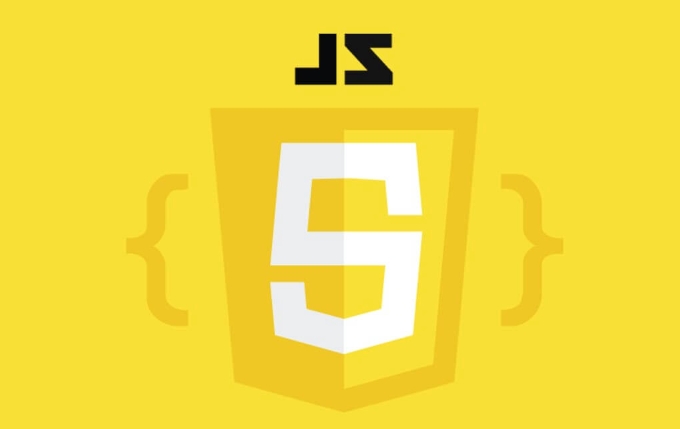The best JavaScript testing framework depends on project requirements and testing methods. If you need simple and flexible unit testing, especially React applications, Jest is the first choice; if you need browser end or end-to-end testing, Cypress or Playwright is more suitable; while if you pursue modern feature support and speed, Vitest can be selected. The details are as follows: 1. Jest is suitable for unit and integration testing for React applications, built-in assertions, Mock and snapshot testing, which is used out of the box but is slow; 2. Cypress is suitable for end-to-end and component testing, runs in real browsers, debug friendly but not suitable for small function testing; 3. Vitest is based on Vite, lightweight and fast, suitable for new projects, compatible with Jest API and concise configuration; 4. Playwright supports cross-browser testing, powerful functions, suitable for multi-browser parallel testing and complex scenarios. Therefore, there is no single "best" framework, and the choice should be based on the test type and project characteristics.

The best JavaScript testing framework really depends on what you're building and how you want to test it. If you're looking for something straightforward and flexible, Jest is often the go-to choice. For browser-based testing or end-to-end scenarios, Cypress or Playwright might be better. And if you prefer a minimum setup with native support for modern JS features, Vitest is gaining popularity fast.

Here's a breakdown of when each one shines:

Jest – Great for Unit Testing in React Apps
Jest has been the default for many JavaScript projects, especially React. It comes with built-in assertion libraries, mocking capabilities, and snapshot testing. You don't need extra tools like Mocha Chai Sinon—everything's already included.
- Snapshot testing makes it easy to check if UI components change unexpectedly
- Comes with code coverage out of the box
- Works well with Babel and TypeScript
It can be slower than some alternatives because it runs tests in Node.js using a simulated DOM, but for most unit and integration tests, that's not an issue.

If you're starting a new React app with Create React App, Jest is already set up for you.
Cypress – Best for End-to-End and Component Testing
Cypress stands out because it runs tests directly in the browser. That means you get real-time feedback as your tests run, which helps a lot when debugging.
- Tests run in real browsers (Chrome, Firefox, Edge)
- Easy to simulate user actions like clicks, typing, and navigation
- Built-in time travel: see every step of your test execution
One downside is that Cypress isn't ideal for unit testing small functions. It's more suited for testing full flows, like form submissions or user journeys.
It also supports component testing now, so you can test React or Vue components without spinning up a full app.
Vitest – Fast Alternative for Modern Projects
Vitest is Vite's answer to Jest. It's designed to be fast by leveraging ES modules natively and works great with frameworks like Vue and Svelte. If you're already using Vite, switching to Vitest feels natural.
- Super fast cold starts and instant HMR updates
- Compatible API with Jest, so migration is easier
- Lightweight and simple configuration
Vitest is still relatively new compared to Jest, but it's quickly catching up in terms of features and ecosystem support.
It's a solid pick if you're starting a new project and want a lightweight, fast solution without the overhead of Jest's bigger tooling.
Playwright – Powerful E2E Tool with Multi-Browser Support
While Cypress focuses mostly on Chromium-based browsers, Playwright supports Chromium, Firefox, and WebKit. This makes cross-browser testing much easier.
- Run tests across multiple browsers in parallel
- Auto-waiting and trace viewer help with debugging flaky tests
- Built-in network interference and mocking
Playwright is also backed by Microsoft, which gives it some long-term stability.
It's heavier than Cypress in setup, but if you need to test across browsers or do things like mobile emulation, Playwright might be the better option.
So yeah, there's no single “best” JS testing framework. Each has its strengths depending on what and how you're testing. If you're doing mostly unit and component testing in a React app, Jest is safe and familiar. If you want full browser control and real interactions, go with Cypress or Playwright. And if speed and simplicity are your top priorities, Vitest could be your best bet.
Basically that's it.
The above is the detailed content of What is the best js testing framework?. For more information, please follow other related articles on the PHP Chinese website!

Hot AI Tools

Undress AI Tool
Undress images for free

Undresser.AI Undress
AI-powered app for creating realistic nude photos

AI Clothes Remover
Online AI tool for removing clothes from photos.

Clothoff.io
AI clothes remover

Video Face Swap
Swap faces in any video effortlessly with our completely free AI face swap tool!

Hot Article

Hot Tools

Notepad++7.3.1
Easy-to-use and free code editor

SublimeText3 Chinese version
Chinese version, very easy to use

Zend Studio 13.0.1
Powerful PHP integrated development environment

Dreamweaver CS6
Visual web development tools

SublimeText3 Mac version
God-level code editing software (SublimeText3)
 How to make an HTTP request in Node.js?
Jul 13, 2025 am 02:18 AM
How to make an HTTP request in Node.js?
Jul 13, 2025 am 02:18 AM
There are three common ways to initiate HTTP requests in Node.js: use built-in modules, axios, and node-fetch. 1. Use the built-in http/https module without dependencies, which is suitable for basic scenarios, but requires manual processing of data stitching and error monitoring, such as using https.get() to obtain data or send POST requests through .write(); 2.axios is a third-party library based on Promise. It has concise syntax and powerful functions, supports async/await, automatic JSON conversion, interceptor, etc. It is recommended to simplify asynchronous request operations; 3.node-fetch provides a style similar to browser fetch, based on Promise and simple syntax
 JavaScript Data Types: Primitive vs Reference
Jul 13, 2025 am 02:43 AM
JavaScript Data Types: Primitive vs Reference
Jul 13, 2025 am 02:43 AM
JavaScript data types are divided into primitive types and reference types. Primitive types include string, number, boolean, null, undefined, and symbol. The values are immutable and copies are copied when assigning values, so they do not affect each other; reference types such as objects, arrays and functions store memory addresses, and variables pointing to the same object will affect each other. Typeof and instanceof can be used to determine types, but pay attention to the historical issues of typeofnull. Understanding these two types of differences can help write more stable and reliable code.
 JavaScript time object, someone builds an eactexe, faster website on Google Chrome, etc.
Jul 08, 2025 pm 02:27 PM
JavaScript time object, someone builds an eactexe, faster website on Google Chrome, etc.
Jul 08, 2025 pm 02:27 PM
Hello, JavaScript developers! Welcome to this week's JavaScript news! This week we will focus on: Oracle's trademark dispute with Deno, new JavaScript time objects are supported by browsers, Google Chrome updates, and some powerful developer tools. Let's get started! Oracle's trademark dispute with Deno Oracle's attempt to register a "JavaScript" trademark has caused controversy. Ryan Dahl, the creator of Node.js and Deno, has filed a petition to cancel the trademark, and he believes that JavaScript is an open standard and should not be used by Oracle
 Handling Promises: Chaining, Error Handling, and Promise Combinators in JavaScript
Jul 08, 2025 am 02:40 AM
Handling Promises: Chaining, Error Handling, and Promise Combinators in JavaScript
Jul 08, 2025 am 02:40 AM
Promise is the core mechanism for handling asynchronous operations in JavaScript. Understanding chain calls, error handling and combiners is the key to mastering their applications. 1. The chain call returns a new Promise through .then() to realize asynchronous process concatenation. Each .then() receives the previous result and can return a value or a Promise; 2. Error handling should use .catch() to catch exceptions to avoid silent failures, and can return the default value in catch to continue the process; 3. Combinators such as Promise.all() (successfully successful only after all success), Promise.race() (the first completion is returned) and Promise.allSettled() (waiting for all completions)
 What is the cache API and how is it used with Service Workers?
Jul 08, 2025 am 02:43 AM
What is the cache API and how is it used with Service Workers?
Jul 08, 2025 am 02:43 AM
CacheAPI is a tool provided by the browser to cache network requests, which is often used in conjunction with ServiceWorker to improve website performance and offline experience. 1. It allows developers to manually store resources such as scripts, style sheets, pictures, etc.; 2. It can match cache responses according to requests; 3. It supports deleting specific caches or clearing the entire cache; 4. It can implement cache priority or network priority strategies through ServiceWorker listening to fetch events; 5. It is often used for offline support, speed up repeated access speed, preloading key resources and background update content; 6. When using it, you need to pay attention to cache version control, storage restrictions and the difference from HTTP caching mechanism.
 JS roundup: a deep dive into the JavaScript event loop
Jul 08, 2025 am 02:24 AM
JS roundup: a deep dive into the JavaScript event loop
Jul 08, 2025 am 02:24 AM
JavaScript's event loop manages asynchronous operations by coordinating call stacks, WebAPIs, and task queues. 1. The call stack executes synchronous code, and when encountering asynchronous tasks, it is handed over to WebAPI for processing; 2. After the WebAPI completes the task in the background, it puts the callback into the corresponding queue (macro task or micro task); 3. The event loop checks whether the call stack is empty. If it is empty, the callback is taken out from the queue and pushed into the call stack for execution; 4. Micro tasks (such as Promise.then) take precedence over macro tasks (such as setTimeout); 5. Understanding the event loop helps to avoid blocking the main thread and optimize the code execution order.
 Understanding Event Bubbling and Capturing in JavaScript DOM events
Jul 08, 2025 am 02:36 AM
Understanding Event Bubbling and Capturing in JavaScript DOM events
Jul 08, 2025 am 02:36 AM
Event bubbles propagate from the target element outward to the ancestor node, while event capture propagates from the outer layer inward to the target element. 1. Event bubbles: After clicking the child element, the event triggers the listener of the parent element upwards in turn. For example, after clicking the button, it outputs Childclicked first, and then Parentclicked. 2. Event capture: Set the third parameter to true, so that the listener is executed in the capture stage, such as triggering the capture listener of the parent element before clicking the button. 3. Practical uses include unified management of child element events, interception preprocessing and performance optimization. 4. The DOM event stream is divided into three stages: capture, target and bubble, and the default listener is executed in the bubble stage.
 A JS roundup of higher-order functions beyond map and filter
Jul 10, 2025 am 11:41 AM
A JS roundup of higher-order functions beyond map and filter
Jul 10, 2025 am 11:41 AM
In JavaScript arrays, in addition to map and filter, there are other powerful and infrequently used methods. 1. Reduce can not only sum, but also count, group, flatten arrays, and build new structures; 2. Find and findIndex are used to find individual elements or indexes; 3.some and everything are used to determine whether conditions exist or all meet; 4.sort can be sorted but will change the original array; 5. Pay attention to copying the array when using it to avoid side effects. These methods make the code more concise and efficient.






